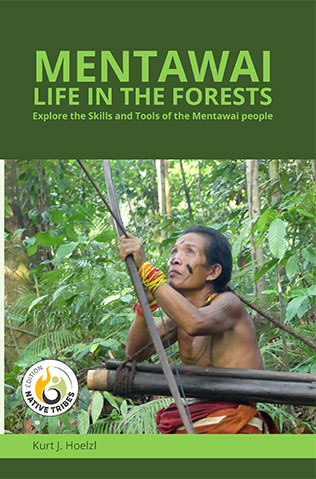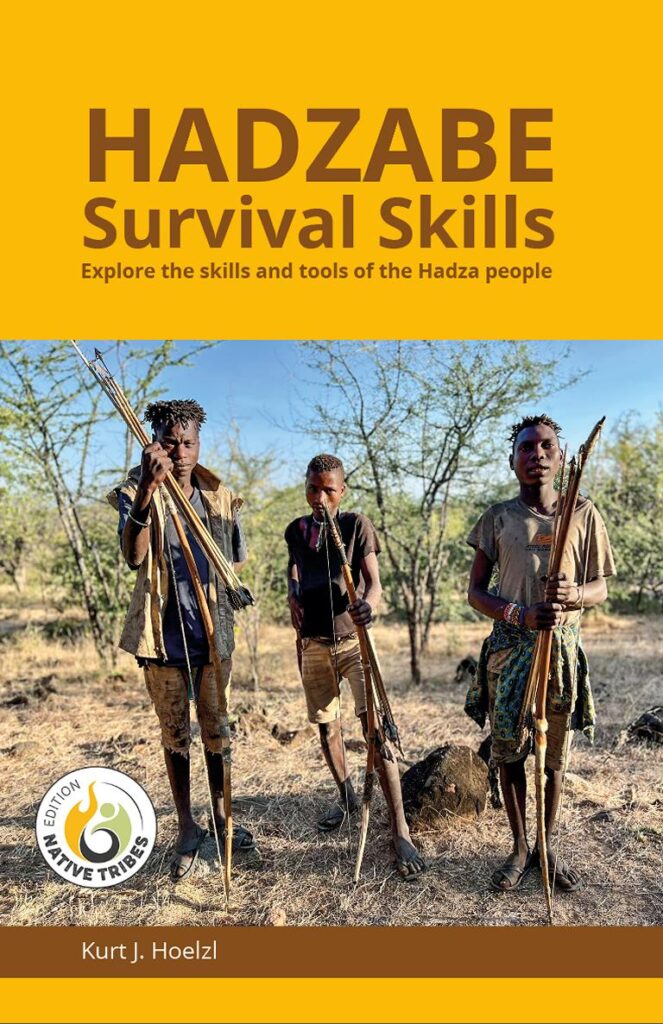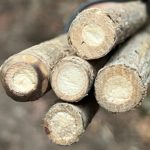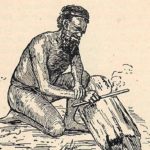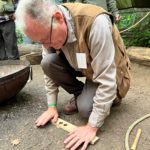Village and Rock Veddas have used flint and steel to produce fires since the end of the 19th century. My former article about Vedda fire drills explains these two different Vedda types. Village Veddas have used this fire-making procedure since about 1850. Rock Veddas were also often supplied with fire steel on government orders and have been shown how to use it since the end of the 19th century. When this method was documented at Dambana village, Sri Lanka, in 2025, the village Veddas had already used this method for about 150 years. It, therefore, can be considered a traditional fire-making method of these tribes. It differs slightly from conventional flint and steel fire-making in most other regions, so it is worth presenting here.
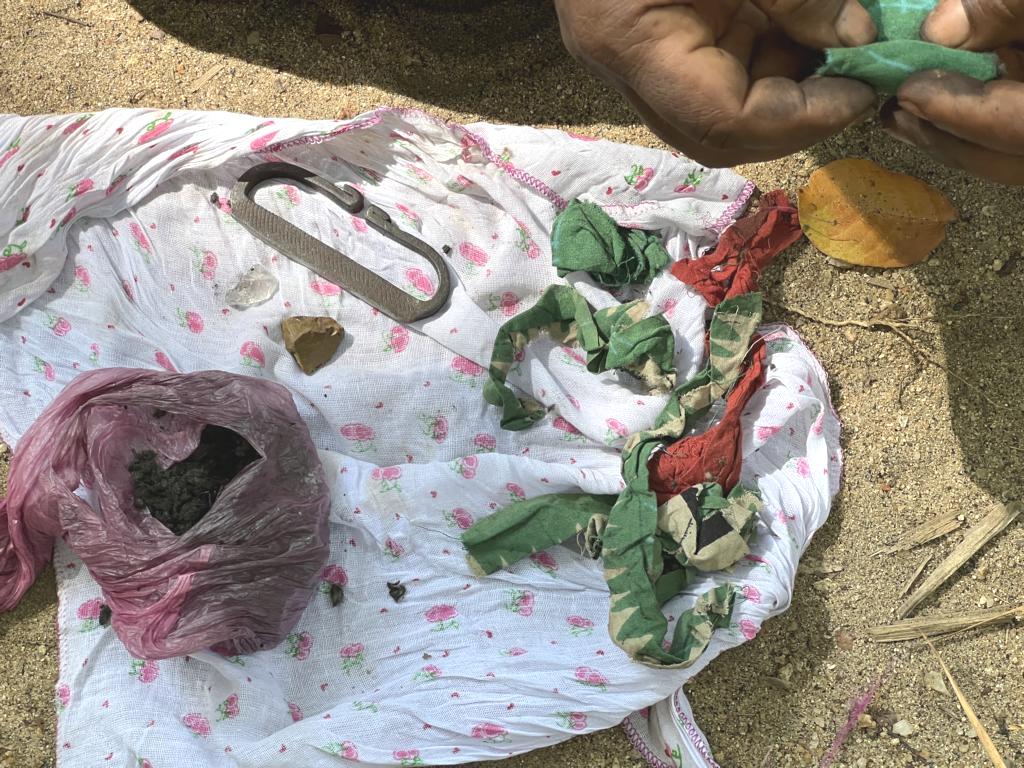
Used materials
The materials used for fire-making are fire steel, quartzite, spark-catching material, textile strips, and tinder. In the following section, we will briefly describe these materials as they were used at Dambana.
Fire steel
Fire steel is the same shape and material as it is commonly used worldwide. In former times, it was produced nearby by Sinhalese blacksmiths from high-carbon iron in the shape of a small horseshoe. However, according to Sarasin, axe blades or iron arrowheads were also used.
Quartzite
Quartzite veins are commonly found in central and northern Sri Lanka. Virgin quartzite can be obtained from these veins, and riverbeds hold sedimentary and eroded quartzite rocks. In the following map section, these veins are colored in dark yellow.
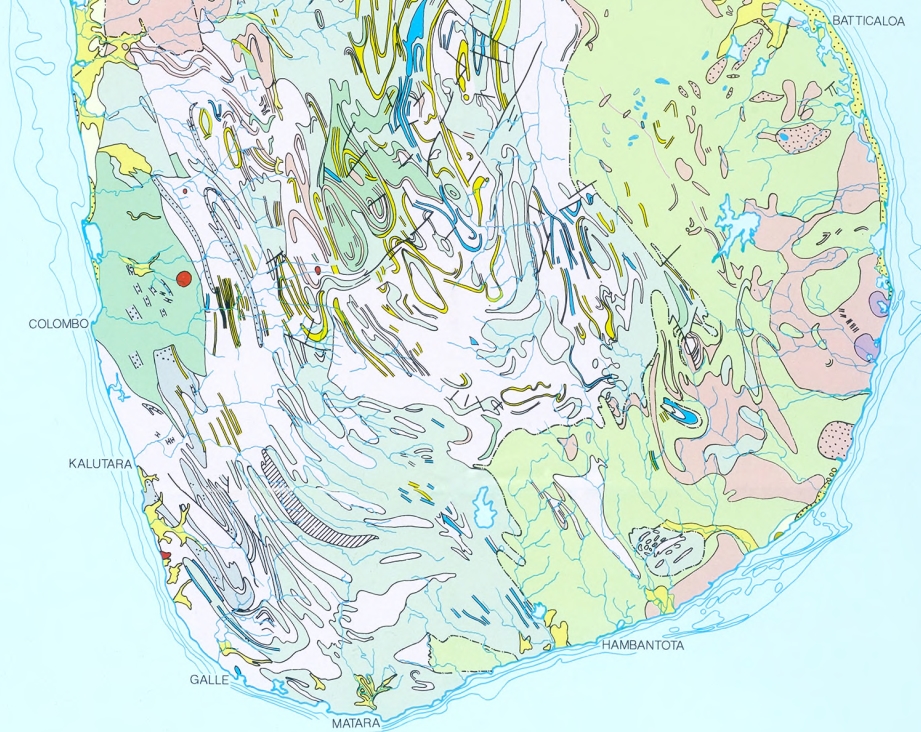
Quartzite must be fine-grained, mechanically strong, and have sharp edges to create a spark with steel. A better choice would be chert, a microcrystalline material high in SiO2. Chert forms three varieties: flint, jasper, and agate. Jasper is a reddish-brown chert, colored by iron impurities. The village Veddas at Dambana created sparks by using a piece of pure quartz crystal and a piece of jasper, as can be seen in the picture above.
Spark catching material
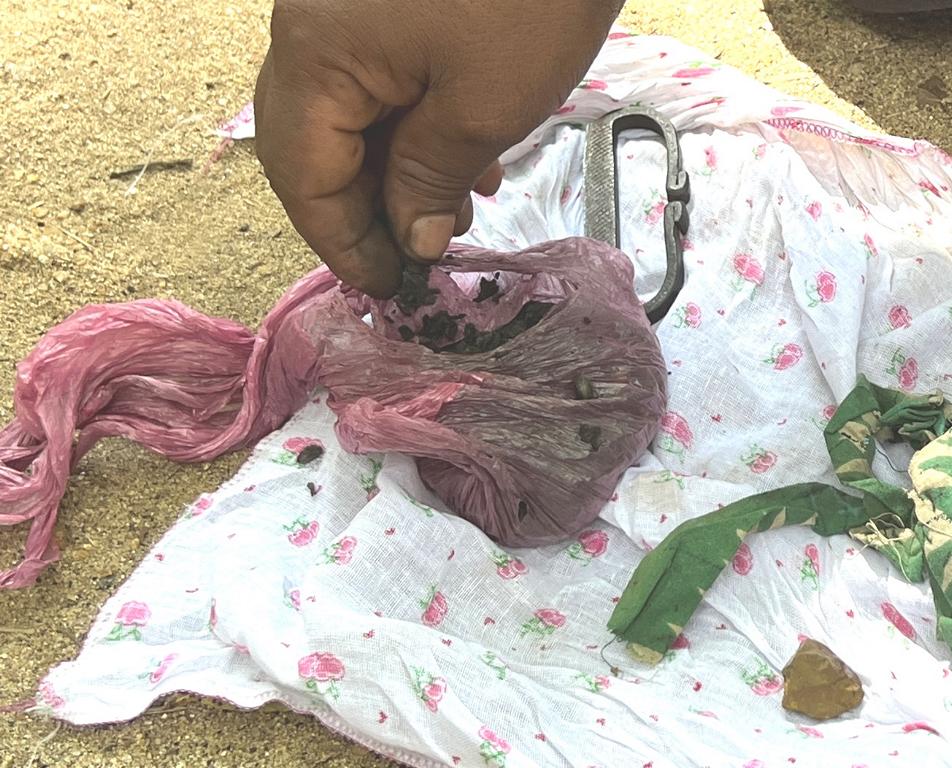
The spark-catching material was tufts of charred, fluffy fibers. As they were not based on woven cotton textiles, fungi, or punk wood, I suppose these were either charred bark fibers, puffed up cotton strands, or Kapok wool.
Cotton strips
About 5 x 15 cm (2’’ x 6’’) long strips of various cotton textiles were used as material for rolling in the embers and the attached spark-catching material.
Tinder
A bundle of rough grass blades was used for a tinder nest.
Procedure of creating fire
In the following, we briefly describe how fire was produced by the village Veddas at Dambana.
Producing a spark
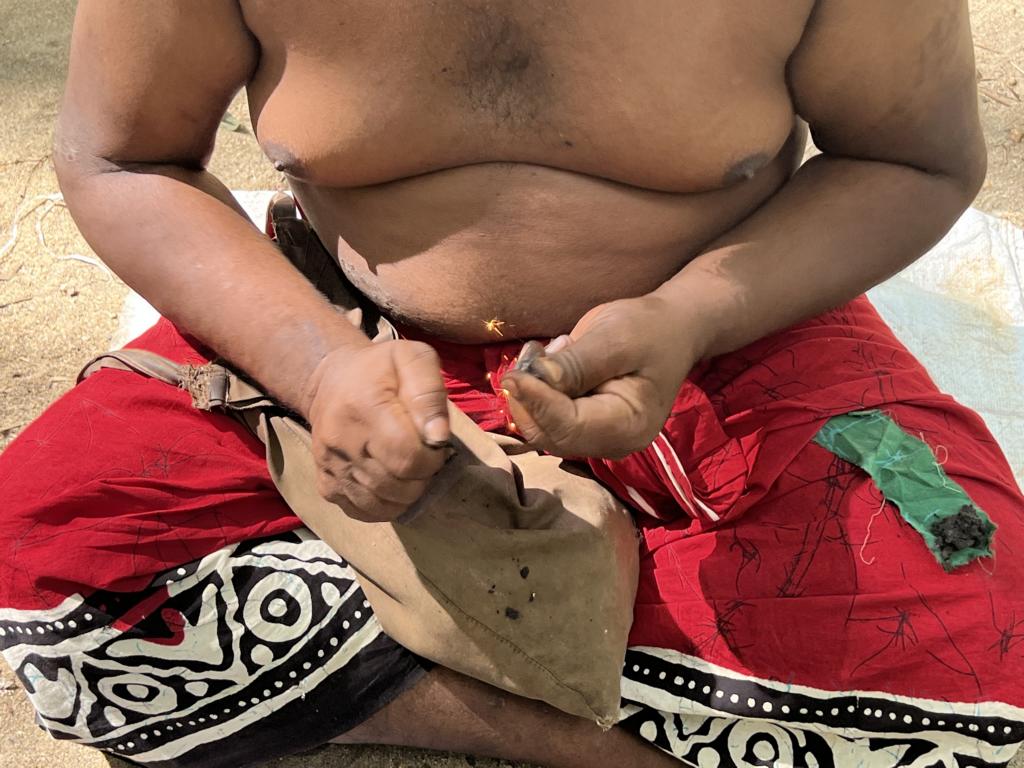
The procedure is always the same: holding the chert between two fingers, placing the spark-catching material above, and scraping the fire steel over the edge of the chert with a quick blow. However, it was not easy in this case, as the quartzite was very small and complex to hold at the right angle. Nevertheless, enough sparks were created in a short time.
Making a cotton roll
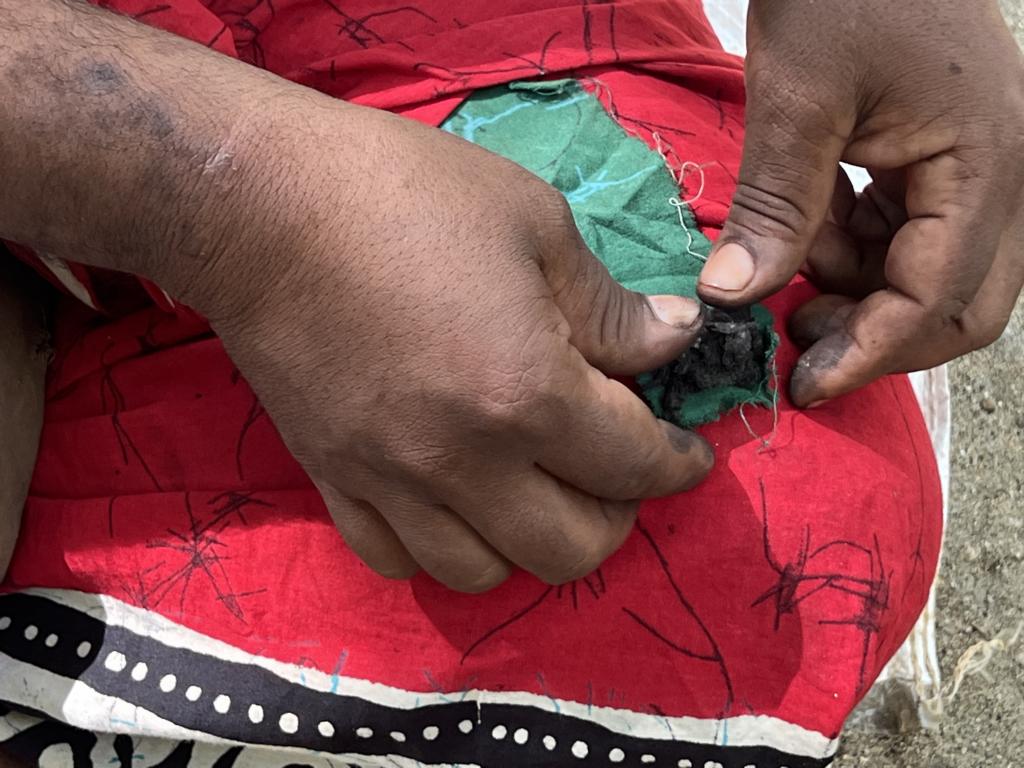
After a sufficiently hot spark was caught in the spark-catching material, it was put into a cotton strip and rolled up.
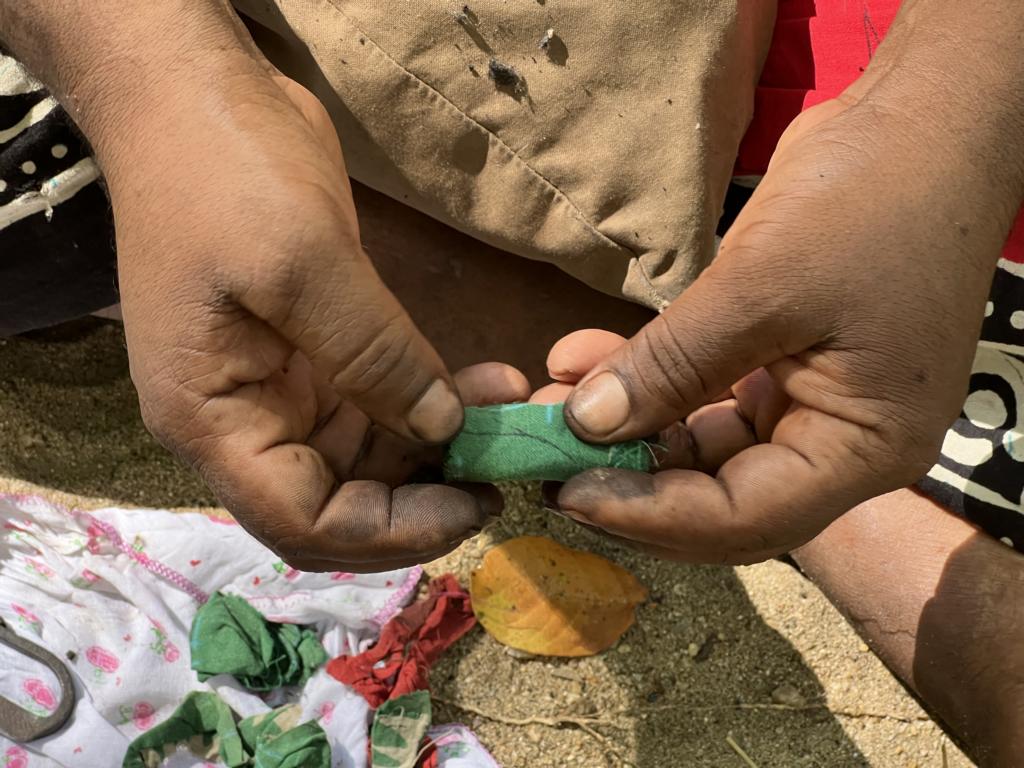
Ultimately, the ember in the spark-catching material was confined within this cotton roll.
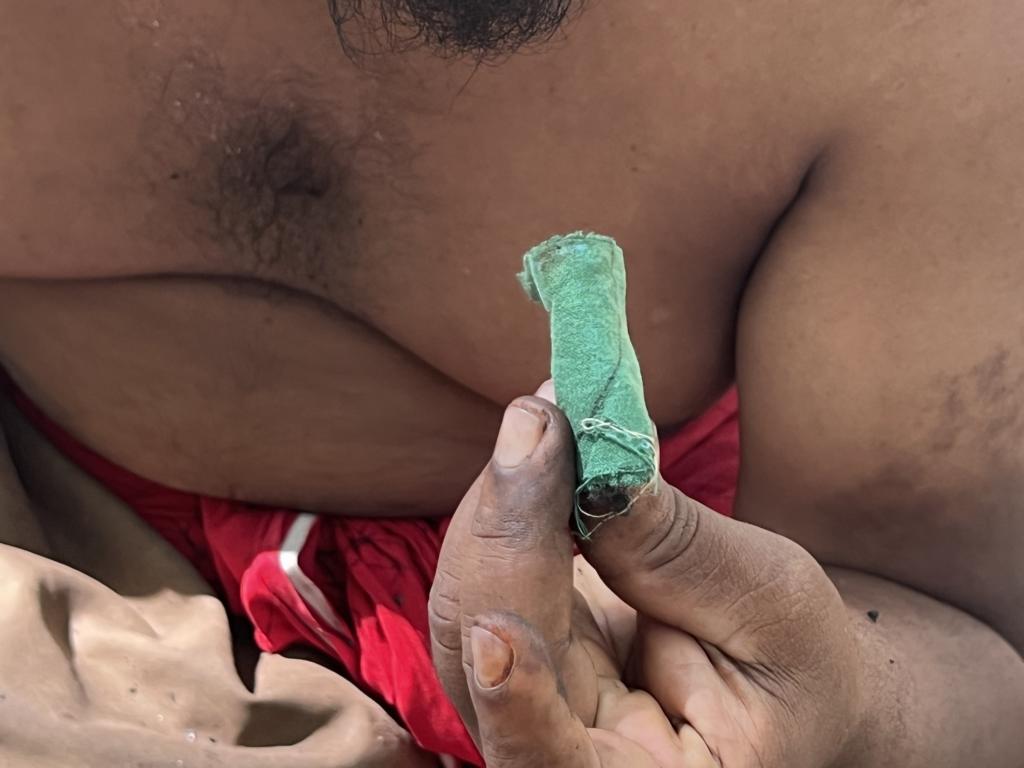
Blowing the fire to life
The Vedda blew into the cotton roll with the ember and funneled the oxygen of his breath into the roll. Humidity of his breath was not a problem anymore, as it was caught in the cotton outside and spark-catching material inside the roll before it reached the ember.

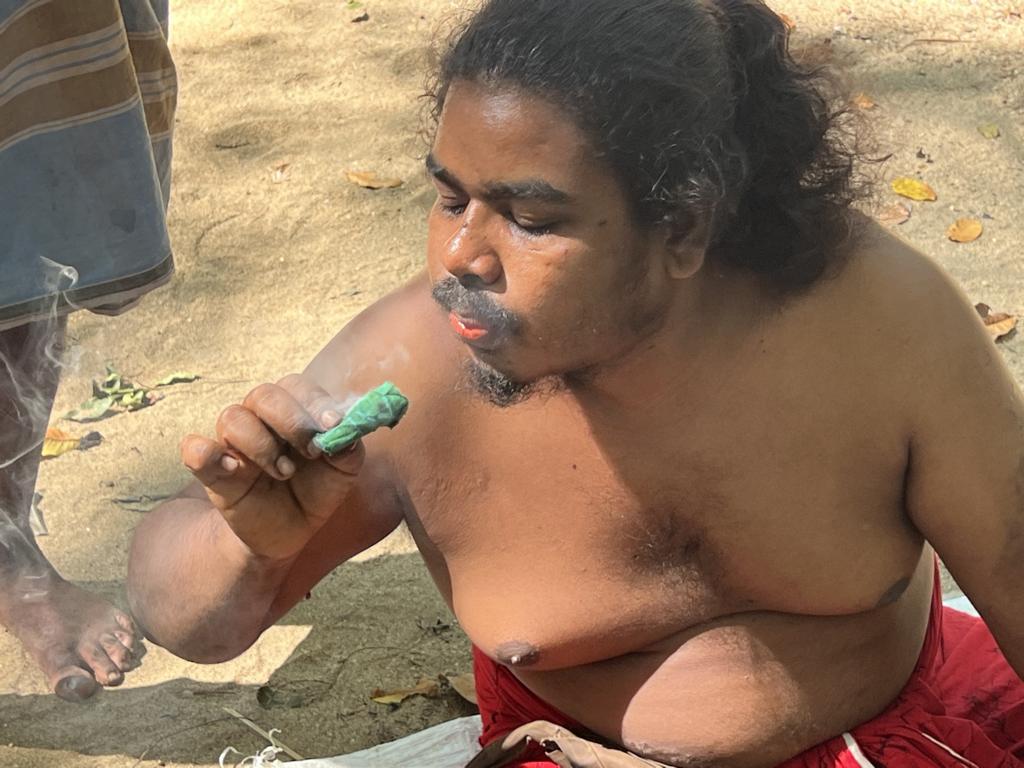
Within a short time, the temperature from the ember increased so much that the upper end of the cotton roll caught fire.
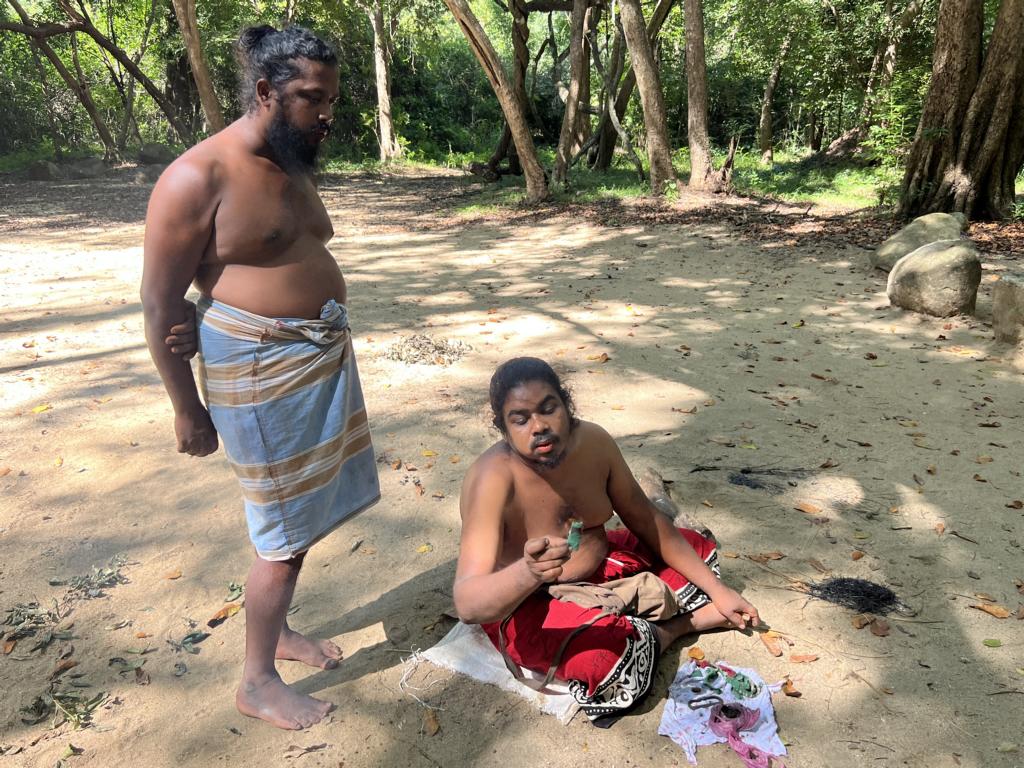
Creating an open fire
Immediately, the burning cotton roll was put into a rough and dry grass bundle. With only a bit of blowing, this bundle caught blazing fire.
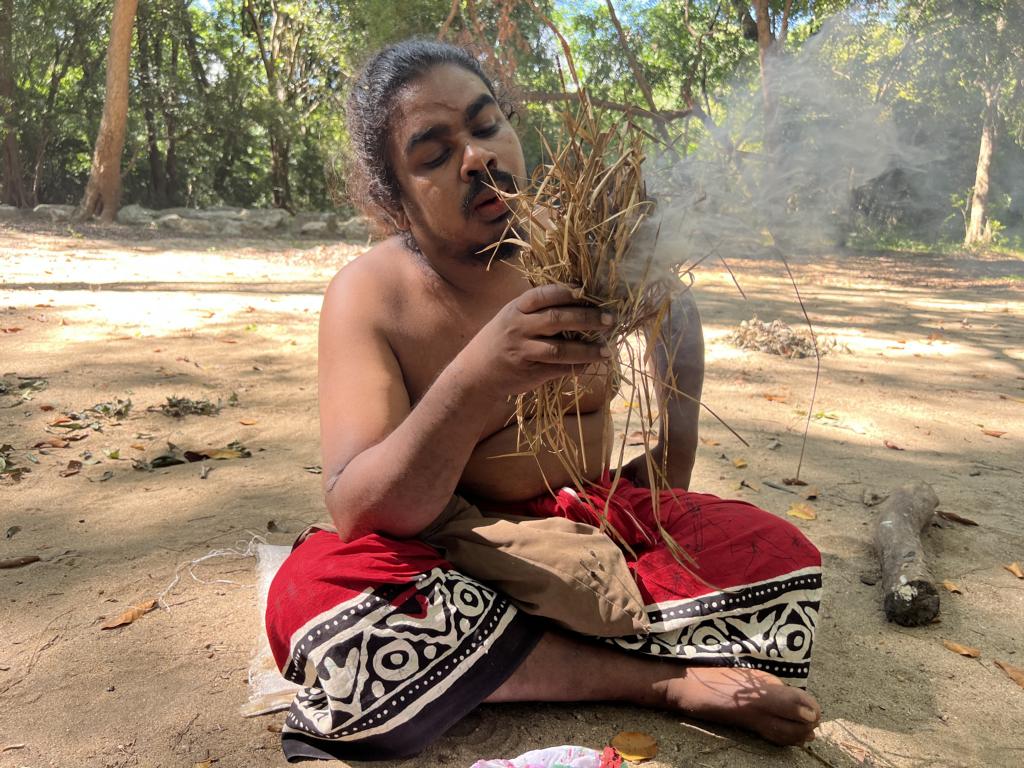
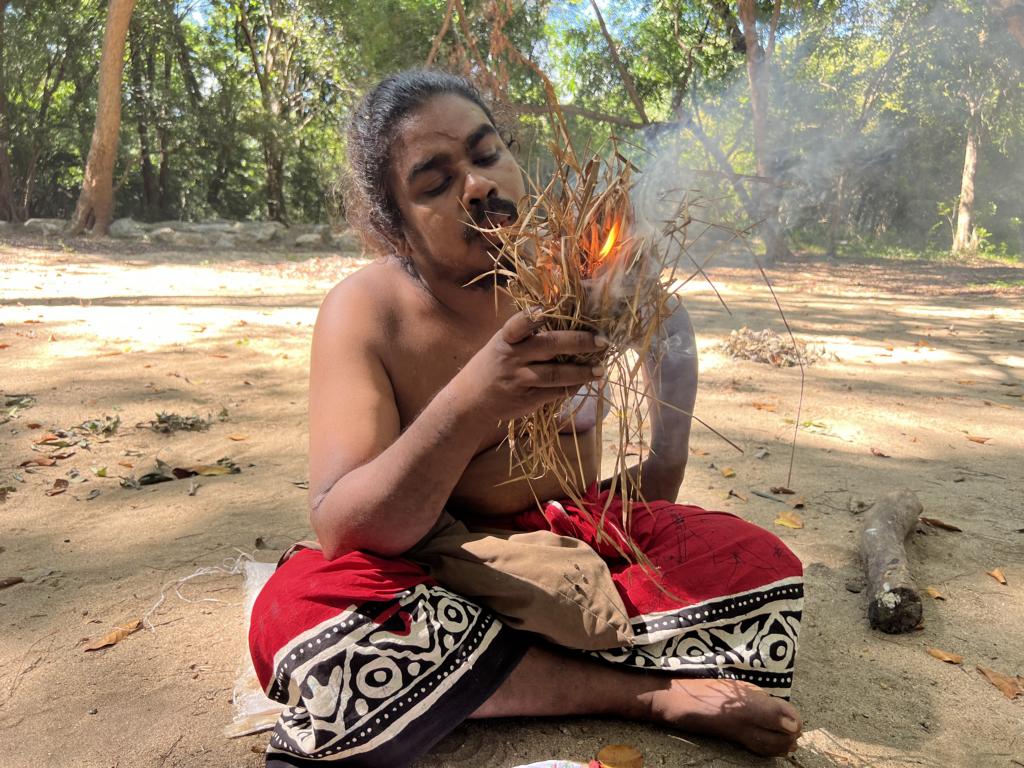
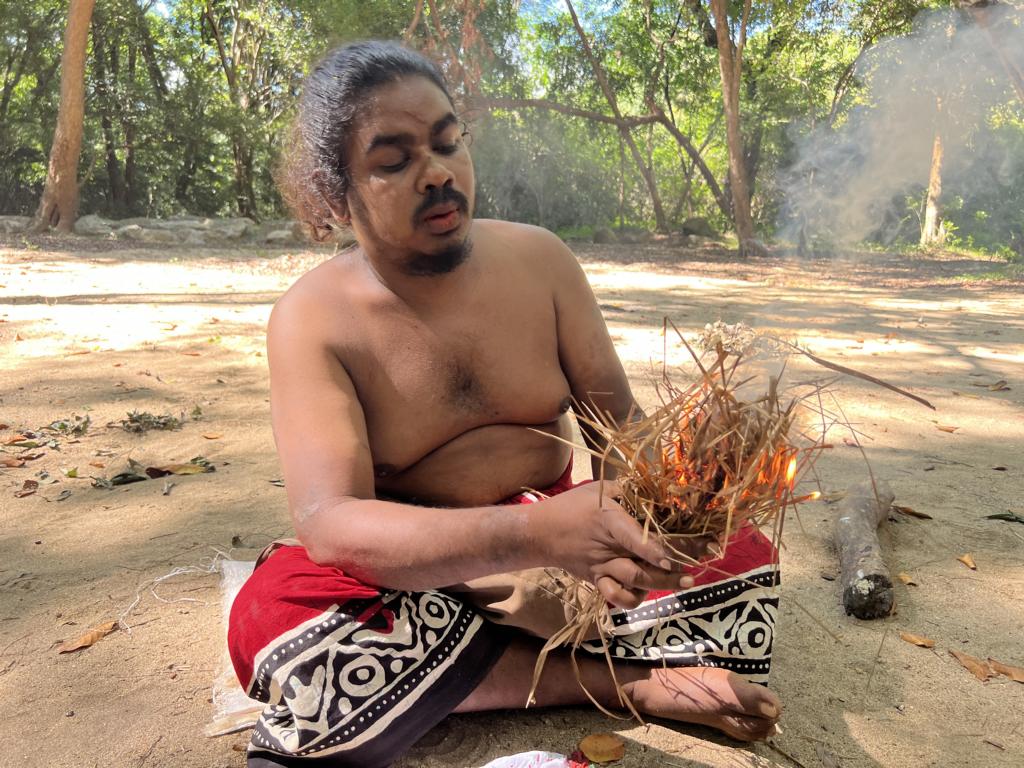
Lessons learned about the Vedda flint & steel fire roll:
- Village Veddas have used flint and steel for about 150 years as a fire-making method.
- The basic procedure is the same as in many other cultures.
- There are three differences from the common flint and steel method.
- 1. The piece of quartzite or chert is smaller than in other cultures.
- 2. Charred fibers replace charred cloth.
- 3. A cotton roll will be created to confine the ember, in which the person blows their breath.
Further readings about fire-making on this website:
Creating fire with a magnifying glass
Hadza hand drill friction fire
Bow Drilling – following the method of Mattias Norberg
Giant Fennel stalks for lighting fire
Batwa pygmies traditional fire lighting method
Manketti wood for friction fire lighting
Bushscout UK’s fire bundle basket
Fire lighting with Flint & Steel
Hand drilling in UK as taught by Dave Watson
Bow drill standard procedure by Dave Watson
Bow drilling in Australia by Gordon Dedman
Hand drill friction fire lighting in Australia
Creating fire by hand drill in Namibia
Australian friction fire wood species
.

